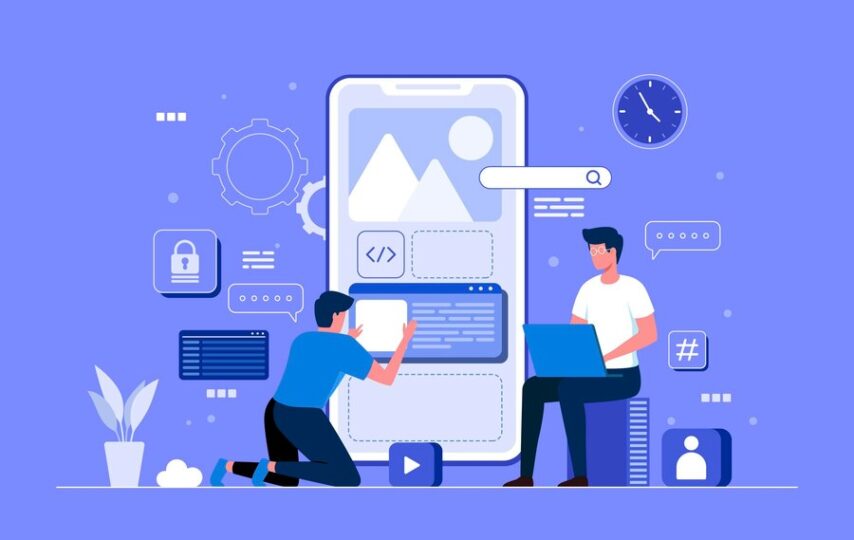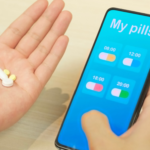The mobile application market is highly competitive and concentrated, forcing businesses to churn out new solutions quickly. However, speeding up might cause the quality to drop, eventually making the app redundant. That’s why most businesses inquire to a mobile app development company what the estimated time is to develop a mobile app. This question is not straightforward as several factors affect the app development time frame. In this blog, we will explain the mobile app development process with estimated duration and factors affecting the development time. We will also provide some tips to minimize the app development time so that the brands can quickly deploy their app.
Mobile App Development Life Cycle
First, we need to learn about the process to understand the duration of mobile app development. Here are 6 stages of the app development cycle and approx. Time duration for each of them.
- Planning
The first step of the app development process is to conduct a feasibility study(practicality of the app) and high-level project planning. After that, the team will define the app concept, do market research, and identify the target audience. The planning stage can take up to 1 or 2 weeks.
- Designing
The team will create wireframes and prototypes, design the UI/UX, and decide on the app’s theme throughout the designing stage of development. This also includes selecting color schemes and fonts and approving the design mockups. This step is quite meticulous and usually takes around 3-6 weeks.
- Development
During the development stage, the app is built through code implementation, iterative development, and regular testing. The team may also integrate third-party APIs and build backend systems as required. Seamless performance is achieved by developers and designers working together regularly. This is the most important stage of mobile app development, which is why it can take up to 6 weeks or if the project is complicated, 6 months.
- Testing
The final stage involves extensive functional and compatibility testing to ensure optimal performance. The team will identify and resolve any bugs or issues that arise during this process. This step takes approximately 4-8 weeks.
- Deployment
It’s time to go through app stores and their approval processes once the app is finished and ready. This stage prepares the app for launch by ensuring it complies with all platform rules. A limited audience rollout may be conducted for additional testing before the final deployment to the public. This entire process typically takes around 1-2 weeks.
- Post-Launch Support and Maintenance
After the app reaches its audience, the team monitors post-launch issues and addresses user feedback promptly. Fueled by data analysis, this continuous improvement process leads to regular updates with exciting new features and enhancements. This stage is an ongoing commitment to delivering the best possible app experience for users.
Key Factors Influencing Mobile App Development Timeline
While we provided an estimated time for various mobile app development stages, this could change in an instant. Here are some of the factors that can affect the time frame of mobile app development.
1. App Complexity
One of the biggest factors is the complexity of the app as it can dictate the development timeline. Simple apps with basic features can be built relatively quickly. Meanwhile, complex apps like a food delivery app development with complicated functionalities, advanced integrations, or enhanced algorithms can take much longer to develop. The more complex the app’s architecture and functionality, the longer it will take to fully design, code, and test each component.
2. Team Size and Expertise
The size and expertise of the development team have a significant impact on project timelines. While a larger team might speed the development process, it also requires efficient collaboration. The expertise of every team member in specific technologies and platforms can positively affect the efficiency of coding and problem-solving. A skilled team that works together cohesively can manage challenges more effectively, potentially reducing the overall development time.
3. Integration of Third-Party Services
Incorporating third-party APIs or services into a mobile app can impact development time. Even though utilizing already existing services could potentially save time, maintaining seamless integration and compatibility can prove difficult. The time required for integration is determined by the complexity of the process, the availability of well-documented APIs, and the necessity for customization to meet the app’s particular requirements.
4. Testing Requirements
Efficient and comprehensive testing of mobile apps can help detect and fix bugs, ensuring better performance. It will ensure that the users have a great experience. However, testing may take a long time, and its duration is determined by a range of factors, including the app’s complexity, the number of platforms it supports, and the many types of testing necessary.
5. Client Feedback and Iterations
The interaction between the development team and the client is vital to the development process. Prompt feedback, clear communication, and efficient iteration cycles can accelerate the development timeline. Conversely, delays in decision-making, unclear requirements, or frequent changes in project scope can prolong the development time as adjustments are made to meet evolving expectations.
6. App Store Approval Process
When a mobile app is submitted to app stores like Google Play or the Apple App Store, the approval process can vary in duration and add to the overall development timeline. The app store approval process involves verifying that the app complies with all the rules and regulations. This might take a while. The completeness of the app, compliance with rules, and any resubmissions required as a result of app store administrators’ input can all have an impact on how long it takes for the app to be made publicly available.
Tips for Minimizing Development Time
- Focus on building the minimum viable product (MVP) first, with essential features for launch. Delay non-critical bells and whistles for later updates.
- Break down the project into short, manageable sprints with clear goals. This allows for rapid feedback and faster adjustments.
- make sure to use tools for code testing, deployment, and bug tracking to free up developer time for more creative work.
- Use project management tools, instant chat, and scheduled meetings to ensure that everyone is on the same page.
- Integrate automated testing throughout development to detect flaws early and save costly rework.
Conclusion
According to a Harward business review article, First-mover advantage allows businesses to capture attention and establish brand recognition before competitors. This also applies in terms of mobile app development, as businesses want to quickly release their app in time to better compete. Also, A well-timed launch campaign can leverage current trends and events, leading to higher user acquisition rates and a larger user base. In this blog, we have provided factors that affect the overall mobile app development time. We have also explained the app development life cycle and estimated time of each stage. Also, we have added some useful tips to reduce the development time without compromising the quality of the app.








